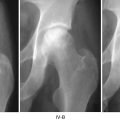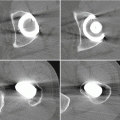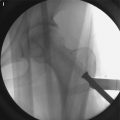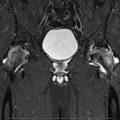Parameter
Available N
Median survival rate (%; range: 1–8 years)
P value
THR by gender
Male
9,814
96.80 (99.03–93.80)
0.2050
Female
2,641
97.36 (98.65–94.43)
THR by age
<30
519
95.18 (98.84–92.68)
0.2841
30–50
6,422
95.97 (98.99–94.18)
>50
5,525
96.05 (98.64–94.79)
HA by gender
Male
6,165
97.96 (99.69–94.29)
0.57
Female
1,266
97.64 (99.92–94.02)
HA by age
<30
474
96.20 (99.58–95.36)
0.1855
30–50
4,448
96.08 (98.83–94.72)
>50
2,495
95.43 (98.60–94.11)
THR vs. HA, n = 19,873
THR
12,466
98.14 (99.87–94.71)
0.071
HA
7,407
97.95 (99.88–94.94)
Vascularized iliac grafting or vascularized fibular grafting was less performed as compared with the CD. Vascularized iliac grafting was reported to have 80 % successful clinical results and 70 % successful radiologic results in precollapse cases [32]. It was decreased to 24 % in segmental collapse cases [33]. Alternatively, other salvage procedures such as osteotomy, multiple drilling, or implantation of wire coils were reported in some small case series from Taiwan or China [34–38].
8.4 Summary
The true incidence of ONFH in Taiwan or China has not been reported in the literature. In Canada, ONFH has been reported to account for 11 % of the THR surgeries performed [39]. Other authors have estimated that 10,000–20,000 cases of ONHF are diagnosed in the USA each year and that this diagnosis accounts for between 5 and 18 % of the annual THR procedures [40]. In a smaller comparative study, the incidence of ONFH as the index diagnosis of THR in Japanese population was 4 times higher than that of Caucasian population [5]. Although there are no data on the actual incidence of hip disease in Han Chinese, one study in Hong Kong involving 647 cases of THR revealed that ONFH constituted 45.6 % of all cases of hip replacement procedures [7]. By using the NHI database in Taiwan , ONFH accounted for 55 % of nontraumatic hip arthroplasty procedures in Taiwan, which is close to that of Hong Kong. Genetic and ethnic predisposition to the development of ONFH may explain the disparity between Asian and Caucasian populations. Demographically, men account for 80 % of ONFH cases, and the peak age incidence falls in the fifth decade of life (41–50 years of age). With these demographic features, ONFH may cause great socioeconomic impact.
Based on the NHI database, the most commonly performed procedures were THR, HA, and CD, with the proportions 56.81, 33.25, and 5.6 %, respectively. Joint replacement other than femoral head salvage procedures was performed in more than 90 % of the cases. Some of the disparity may be the delay in diagnosis of early-stage ONFH or the overzealous use of HA in Taiwan. HA carries the risk of periprosthetic osteolysis by polyethylene wear and high incidence of groin pain [41]. HA is not recommended for ONFH as a general consensus in most countries. However, the NHI database and some reports from Taiwan suggested HA had an 8-year survivorships of 94.94 % that was not inferior to 94.71 % for THR [30, 31].
In conclusion, ONFH accounts for the majority of joint replacement cases in Taiwan and China. Although steroid and alcohol are commonly reported as the risk factors, genetic predilections might play an important role in the pathogenesis of ONFH. The awareness of ONFH and to encourage early diagnosis and treatment should be a task of the orthopedic surgeons and their affiliated medical professionals.
Acknowledgments
We thank to the research staffs at the Center for Health Policy Research and Development, National Health Research Institutes, for their support in retrieving and cleaning data from the NHI database and to the staff at the Department of Health Services Administration, China Medical University, for data management.
References
1.
2.
Lieberman JR, Berry DJ, Mont MA, et al. Osteonecrosis of the hip: management in the 21st century. Instr Course Lect. 2003;52:337–55.PubMed
3.
Lavernia CJ, Sierra RJ, Grieco FR. Osteonecrosis of the femoral head. J Am Acad Orthop Surg. 1999;7:250–61.PubMed
4.
5.
Hoaglund FT, Shiba R, Newberg AH, et al. Disease of the hip: a comparative study of Japanese Orientals and American white patients. J Bone Joint Surg. 1985;67-A(9):1376–83.









